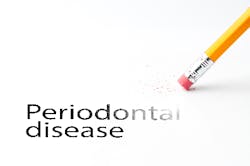Editor's note: This is Part Two of a two-part series. Part One can be found here: “Pocket depth reduction is not the aim of periodontal treatment.”
The researchers who originally identified the periodontal pathogens—Anne D. Haffajee, DDS, and the late Sigmund (Sig) S. Socransky, DDS—stated, “The ultimate risk factor for an infectious disease is the causative agent of that disease. Without that agent, no disease will take place no matter what [their emphasis] other risk factors the subject may possess.” (1)
The causative agent is the specific bacteria causing each patient’s case of periodontal disease.
Drs. Haffajee and Socransky further stated, “The most appropriate control of these diseases is through the control of the microorganisms that cause them. Nevertheless, those of us who are clinicians often treat periodontal diseases in a fashion that is minimally influenced by the microbial agents that caused the problem. … Rarely do we focus on the real culprit, the organisms [again, their emphasis] that caused the disease in the first place!!!” (1)
The chapter “Rationale for Periodontal Treatment” from the 11th edition of Carranza’s Clinical Periodontology reads, “The removal of plaque and all the factors that favor its accumulation is the primary goal of local therapy.” (2)
Pocket numbers, bleeding on probing (BOP), swelling, redness, and bone loss are not plaque, nor are they factors that lead to plaque accumulation. Rather, they are the clinical manifestation, the evidence, the clinical signs, the observable and measurable results of periodontal disease.
Carranza’s Clinical Periodontology goes on to state, “However, local factors, particularly plaque microorganisms, are the most common deterrents to healing after periodontal therapy.” (2)
Does debridement of necrotic tissue need to occur? Yes. Do we need to reexamine the periodontium postoperatively? Yes. The reduction in pocket depths, BOP, etc., is the clinical manifestation, the evidence, the clinical signs, the observable and measurable results of periodontal therapy, rather than the primary goal of treatment [my emphasis].
READ MORE OF DR. NAGELBERG’S BLOGS . . .
References
1. Socransky SS, Haffajee AD. Evidence of bacterial etiology: a historical perspective. Periodontol 2000. 1994;5:7-25.
2. Carranza FA, Newman MG, Takei H, Klokkevold PR. Rationale for periodontal treatment. In: Carranza’s Clinical Periodontology. 11th ed. St. Louis, MO: Elsevier Saunders; 2012:387.








